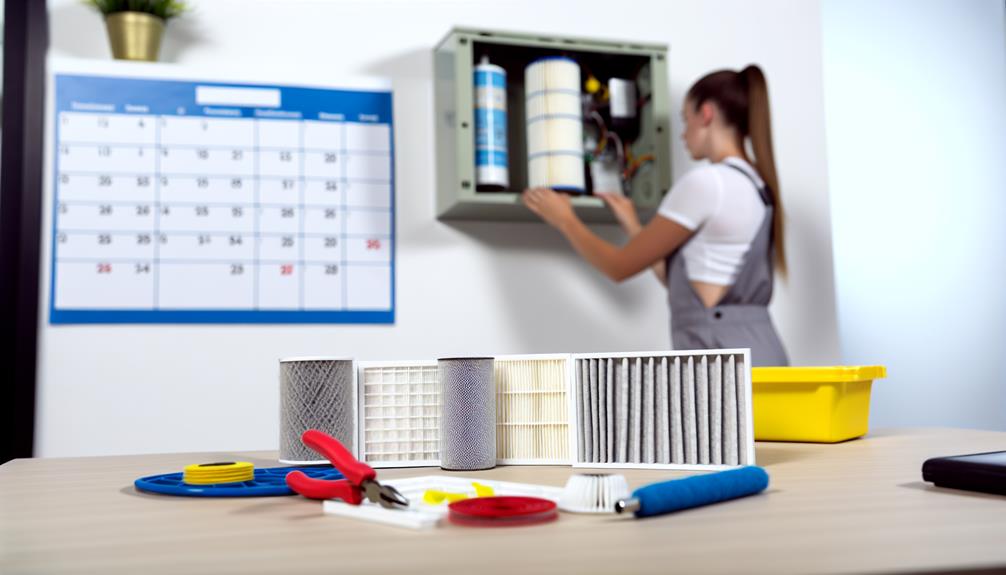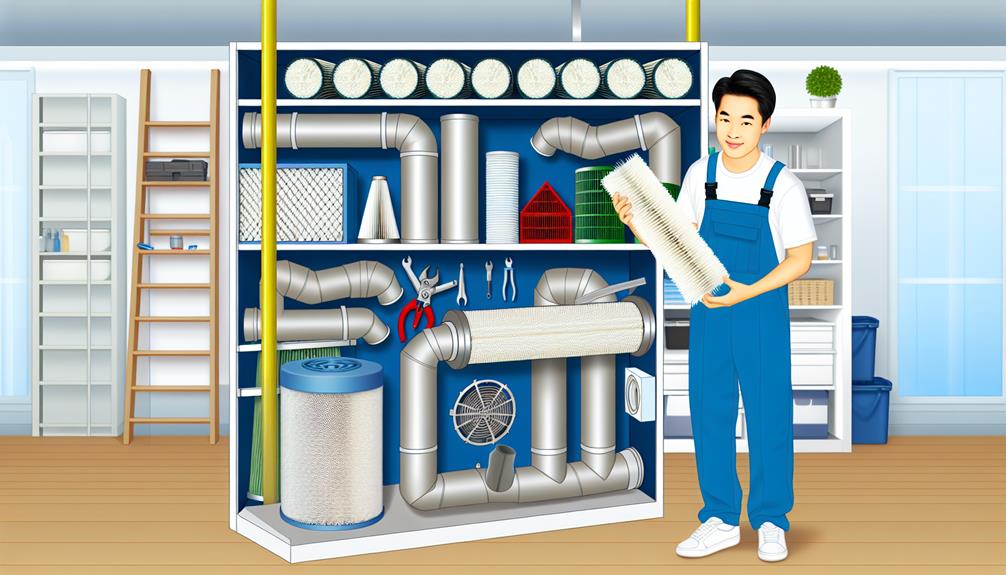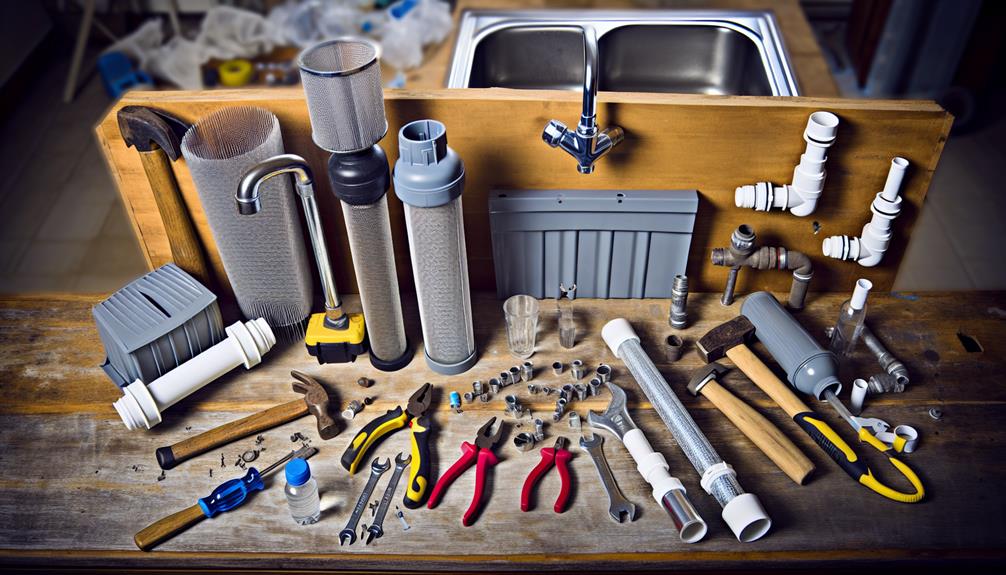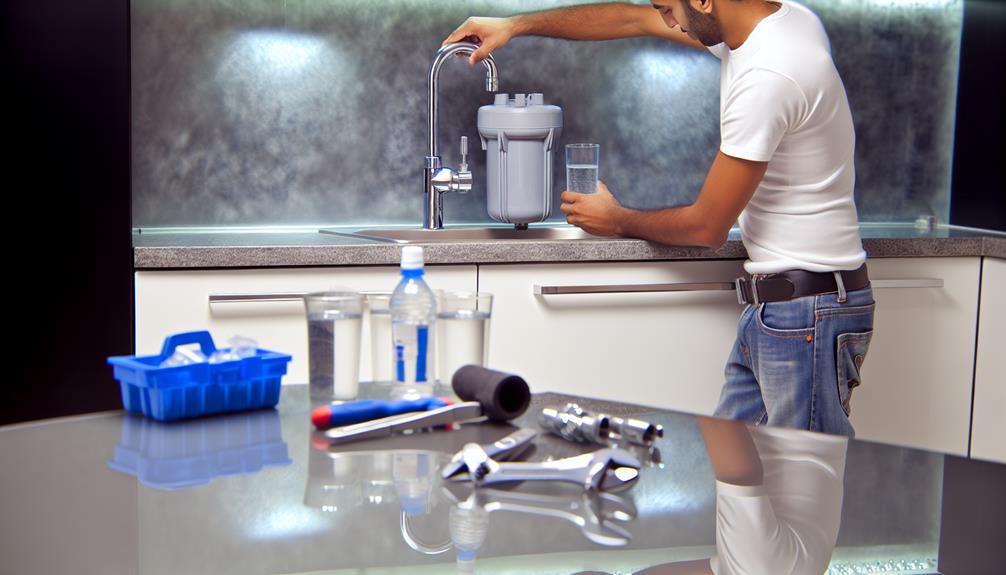You might think that maintaining your home's filtration system requires extensive knowledge of plumbing and mechanics, but it's actually simpler than you'd expect.
As the cornerstone of a healthy household, ensuring your filtration system is functioning optimally is a task you can't afford to overlook. Regular inspections, often considered a hassle, are nothing short of a preventive measure that can save you from future headaches. By keeping a strict schedule, you'll catch potential issues before they become costly repairs.
And while replacing filters might seem like a chore, remember that this simple act is a key component in maintaining the purity of your air and water.
As we explore the necessary steps, including the often-forgotten task of cleaning system components and the importance of monitoring water quality, you'll find that the peace of mind and health benefits gained are well worth the minimal effort required.
Stick around to uncover the essential practices that will ensure your home's filtration system continues to serve you well without interruption.
Schedule Regular Inspections

To ensure your home's filtration system operates at peak efficiency, it's crucial to establish a routine for professional inspections. You'll need to determine the optimal inspection frequency, which depends on factors such as the type of system you have, the quality of your water source, and your household's water usage. Most manufacturers recommend at least an annual check-up by a certified technician.
Professional servicing should include a thorough examination of filters, membranes, and other critical components. Technicians will look for signs of wear, corrosion, and clogging, which could impair the system's effectiveness. They'll also verify that the system's pressure and flow rates meet the designed specifications. This kind of expertise ensures that your system not only runs smoothly but also safeguards your water quality.
Keep in mind that certain conditions may necessitate more frequent inspections. If you notice changes in water taste, odor, or clarity, don't hesitate to schedule a service call. Additionally, if your home has a high level of sediment or you have a large family placing heavy demand on the system, increasing the professional servicing intervals can prevent potential failures and maintain purification performance.
Replace Filters Timely
Regularly replacing your filtration system's filters is critical to maintaining water quality and ensuring the longevity of the system. You must pay close attention to the filter lifespan; different filters have varying life expectancies based on their materials and the contaminants they remove. Waiting too long to replace a filter can lead to a decline in water quality and potentially damage your system.
To adeptly manage filter replacement, consider these steps:
- Determine the Filter Lifespan
- Check manufacturer's recommendations for specific filters
- Monitor water clarity and taste as indicators of filter performance
- Disposal Methods
- Follow environmental guidelines for disposing of old filters
- Recycle if the filter materials allow
Clean System Components

Beyond replacing filters, you'll need to thoroughly clean the various components of your filtration system to prevent buildup and ensure optimal performance. Dirt and grime not only compromise water quality but also shorten component lifespan and hinder efficiency. Tackle this task with precision, adhering to manufacturer guidelines for the specific parts of your system.
Here's a basic table to guide you through the cleaning process:
| Component | Cleaning Method | Frequency |
|---|---|---|
| Housings | Soapy water, rinse | Biannually |
| Valves | Disassemble, inspect | Annually |
| O-rings | Replace if necessary | Annually |
| Pipes/Tubing | Flush with solution | Semi-annually |
| Water Tanks | Drain, scrub, refill | Annually |
Efficiency checks should be performed after cleaning to ensure your system is running as intended. Look for any signs of wear or damage during your inspection. If you're encountering issues with water pressure or quality after a thorough cleaning, it may be time to consult a professional or consider replacement parts.
Monitor Water Quality
Monitoring your home's water quality is an essential step in ensuring your filtration system's effectiveness and longevity. Regular checks help you catch any potential issues early on, preventing more significant problems down the line.
To effectively monitor your water quality, consider the following steps:
- Utilize Water Testing Kits
- Purchase a reputable water testing kit that measures a variety of contaminant levels.
- Perform tests quarterly or as recommended by the kit manufacturer to track changes over time.
- Assess Contaminant Levels
- Compare the results against the Environmental Protection Agency (EPA) standards to determine if your water is within safe limits.
- Pay close attention to critical contaminants like lead, bacteria, nitrates, and chlorine levels.
Conclusion
Ensure your home's filtration system operates at peak efficiency by sticking to a regular inspection schedule. Replace filters promptly to avoid impurities sneaking into your water.
Don't overlook cleaning vital system components; it's crucial for preventing clogs and maintaining flow. Keep an eagle eye on water quality; it's the telltale sign of your system's health.
By following these steps, you'll safeguard your water's purity and extend your system's lifespan. Remember, proactive care is key.

